Mauryan Art and Culture
by Devender
0 2107
There are no significant architectural remains found of the period between the Harappans and the Mauryas because buildings of this period were not made of stones but of mud and wood which could not stand the remnant floods and other natural calamities.
Mauryan Art
The Mauryan art form represents an important transition in Indian art from the use of woods to stone.
- Shraman tradition:
- Sarma means "One who strives" or "Laborer" in Sanskriti and Pali
- It applied to all those who wholeheartedly practised enlightenment
- Shraman tradition is best kept in the term parivrajaka, meaning a homeless wanderer
- Shraman tradition gave rise to Jainism and Buddhism and some nastika schools of Hinduism such as Carvaka and Ajivika
- Mauryan Art:
- Court Art (State Initiative):
- Popular Art (Common Man Initiative):
- Pillars / Eddicts:
- About 40 feet tall, tapering monoliths, Highly polished
- Incorporates fluted petals in falling elongated shape depicting a bell
- Surmounted by an abacus ornamented with animal and floral motifs in relief
- Top portion carved with sculptured capitals (bull, lion, elephant etc.)
- Sarnath Lion Capital:
- Mauryan Stupas:
- 8 of them over the relics
- 9th over the vessel in which the relics were originally deposited
- The Stupa was enclosed by a circumambulatory path (pradaskshina) and crowned by an umbrella of wooden fence
- Four gateways (Toranas) are constructed in all four directions
- Each Torana consists of two vertical pillars and three horizontal bars on the top
- Events from the life of the Buddha, the Jataka stories, were depicted on the railings and torans of the stupas
- Caves - Rock-cut architecture:
- Lomas Rishi Cave (300 BC)
- The interior hall of this cave is rectangular with a circular chamber at the back
- The entrance is located on the sidewall of the hall
- Carved out of the living rock
- Polishing inside the cave
- Development of artistic gateway
- Pottery:
- Sculpture:
In the Gangetic valley, the beginning of new socio-religious movements in the form of Buddhism and Jainism were part of Shraman tradition in the 6th Century BC. Mauryas established their power by the 4th Century and Ashoka patronized shraman tradition by 3rd century BC.
The Mauryan era marked the beginning of the Buddhist School of architecture in India. Fa-Hien, a Chinese traveller that came to India during Ashoka's reign stated that "Ashoka's palace was made by spirits" and there were cravings so elegantly executed which can not be achieved from any human hands in the world.
Pillars
Stupas
Sculptures
Caves
Pottery
Ashoka made Red-White-Grey sandstone columns all over his empire. These columns propagated Dhammas and Ashoka's sermons while marking a sacred site associated with Buddha’s life. These columns were:
The examples of it are: Lion capital of Sarnath, Bull capital of Rampurva and Lion capital of Laurya Nandangarh
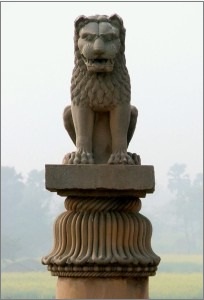
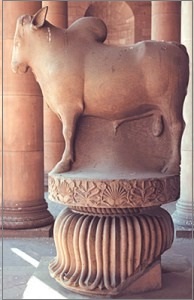
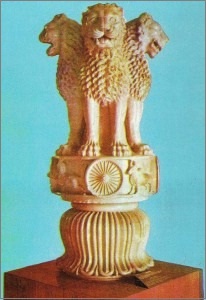
The 12th Major Rock Edict states "Honoring of other sects (religions) lies the honour of one's own sect" and the 13th Major Rock Edict states True conquest is by piety and virtue.
The Mauryan pillars are rock-cut pillars in one piece displaying the carver's skills whereas the Achaemenian pillars are constructed in pieces by a mason.
It is the finest example of Mauryan sculptural tradition. It was built by Ashoka in commemoration of 1st sermon by Buddha (Dhammachakrapravartana) at Sarnath. It consisted of 5 component parts:
1 the shaft
2 inverted lotus bell base
3 a drum with four animals proceeding clockwise (a bull, a horse, an elephant and a lion)
4 4 back to back standing lions
5 the crowning element, Dharamchakra - a large wheel (Broken now)
The capital without the lotus base and the crowning wheel has been adopted as the National Emblem of Independent India.
India knew stupas even before the time of Ashoka but when Ashoka divided up the existing body relics of the Buddha and erected monuments to enshrine them, the stupas became the objects of cult worship. There were 9 stupas built after the death of Buddha out of which:
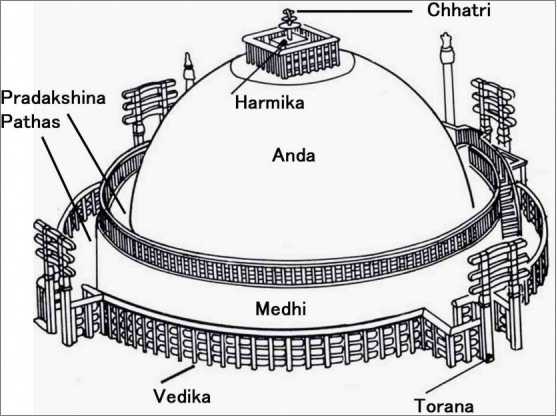
The stupa consists of a cylindrical drum and a circular and with a harmika and chhatri on the top and Buddha is shown symbolically as an empty throne, feet, chhatra, stupas, etc.
The earliest known examples of the rock-cut method in India are carved at Barabar and Nagarjuni hills near Gaya in Bihar - Sudama and Lomas Rishi cave.
The facade of the Lomas Rishi cave is decorated with the semicircular chaitya arch as the entrance. The considerable movement was shown by elephant frieze carved in high relief on the chaitya arch.
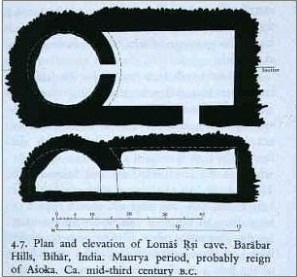
This cave was patronised by Ashoka for the Ajivika sect. Some of the important features of the caves of this period were:
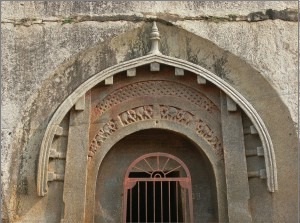
The pottery of this era was Northern Black polished ware (NBPW) which was made of finely levitated alluvial clay and distinguished from other polished wares by its peculiar luster and brilliance. It was largely used for dishes and small bowls.
Large statues of Yaksha and Yakshini were found at many places like Patna, Vidisha and Mathura. All these sculptures had highly polished surfaces.
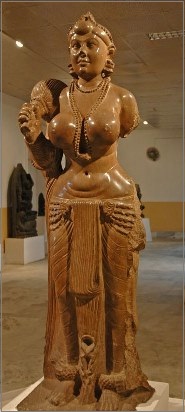
One of the finest examples of the sculptural tradition of the Mauryan Period is the life-size standing image of a Yakshini holding a chauri (flywhisk) from Didargunj near modern Patna. It is made up of sandstone.

Share:


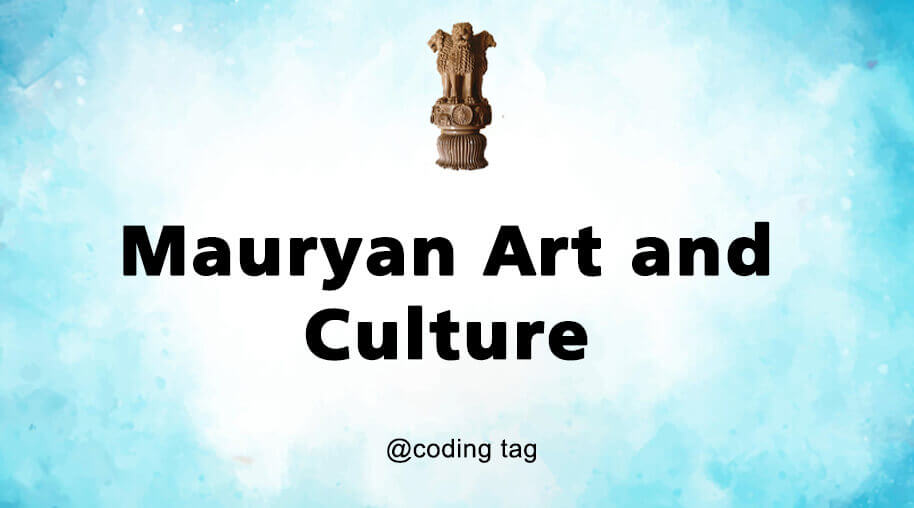



Comments
Waiting for your comments